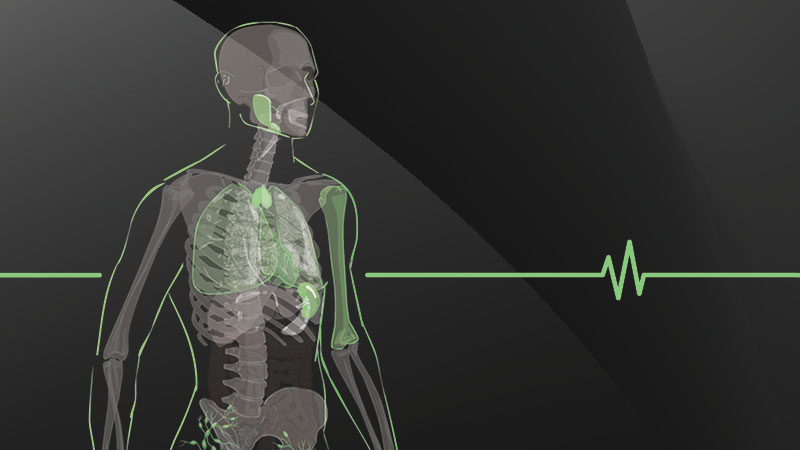Healthcare organizations ranging from large hospital systems and affiliated outpatient facilities to small independent physician practices and everything in between have seen the volume of telehealth visits multiply exponentially over the past couple of months. In addition to protecting patients from the risks of COVID-19, these virtual visits deliver an assortment of benefits to healthcare providers depending on the type, size, and location of facility. Increased patient engagement and satisfaction, reduced delivery costs, better use of limited physician resources, expanded access to rural populations, and better patient outcomes are just a few of the reasons why telehealth visits will remain the norm long after the threat of COVID-19 passes.
As the industry moves beyond emergency response and settles in for what is sure to be a new era in telehealth where virtual visits may, in some cases, usurp in-person care, the time is now to start planning for and implementing infrastructure enhancements that will be needed to support the shift and shoulder the significant increase in load. For most facilities, additional bandwidth will be a must to ensure seamless delivery of telehealth services. But as the “pipe” is made bigger, it’s important to remember that more robust power, cooling, monitoring, and IT management solutions will also be needed to protect the network and patient data and avoid system downtime. After all, it doesn’t matter how much bandwidth or compute power you have if connectivity is lost or security is breached.
Preventing the loss of power or internet access in the middle of a telehealth visit—an incident that would be inconvenient at best and potentially life-threatening at worst—requires backup power for critical equipment, reliable power distribution, thermal management systems to handle the heat output generated by additional IT equipment, and remote monitoring and network access and control capabilities that enable real-time incident response. At the same time, strengthening the security of the IT infrastructure will be key to keeping sensitive healthcare information safe during telehealth visits.
Below are three approaches that can serve as a guideline as you customize an infrastructure improvement roadmap that will prepare your facility to reliably and securely meet the demands of the new normal in healthcare delivery.
1. Build redundancy into your telehealth infrastructure to minimize disruption of patient care.
If the connection is dropped during a telehealth visit, at a minimum, patients will lose valuable face time with providers. They may have difficulty rescheduling, which could jeopardize outcomes. The stakes are higher and the consequences even more severe if the connection drops when surgeons are virtually consulting during an OR procedure.
No matter how your specific facility uses telehealth, it is critical to add backup power protection directly to the computers and other network equipment that enable these capabilities. For example, in doctors’ offices or in nurse workstations in larger facilities, small desktop uninterruptible power supply (UPS) solutions can be added to the PCs that will be dedicated to telehealth. Good telehealth power options include desktop, offline, or line-interactive UPS units.
IT management should also be part of the desktop-level solution. Adding desktop KVM switches supports privacy and compliance with HIPAA regulations. The switches let users easily switch between functions, providing a single point of access to critical systems and ensuring that equipment used for telehealth purposes is kept secure.
2. Modernize legacy health IT infrastructure and network closets to support increased bandwidth requirements and handle higher data volumes.
Once your workstations are supported and secure, it’s time to think further upstream to the data center, network closets, and server rooms that house the IT equipment your facility depends on every day. Given the additional bandwidth requirements needed to support telehealth initiatives, there’s no time like the present to reassess legacy power and cooling infrastructure and look for weaknesses or vulnerabilities that need to be addressed.
Power
Specifically, as you add new servers, switches, routers, and gateways to further enable telehealth, you will need to think through your power protection and power distribution strategies. It may be the right time to consider upgrading to higher capacity line interactive UPS systems or even an online double conversion UPS system that offers continuous power monitoring and premium power protection. You may also need to add power distribution units (PDUs), which provide additional outlets to support new equipment. Basic PDUs ensure reliable power delivery to each device. More sophisticated versions, including metered, monitored, and switched rack PDUs, offer additional capabilities, including the ability to remotely control and monitor power of individual assets or even remotely reboot a server if required.
Cooling
All of this new and additional IT and telecom equipment obviously generates more heat, so thermal management solutions in your network closet will need to be considered as well. Many precision cooling systems are specifically designed for network closets and small server rooms and can be either ceiling-mounted or rack-mounted to free up valuable floor space for IT equipment. Today’s thermal management solutions are engineered for both reliability and efficiency, providing the level of equipment protection your facility needs now more than ever while helping to control your energy spend.
Monitoring
For even further peace of mind, you can supplement power and cooling solutions with additional monitoring capabilities that can be provided through a combination of smart PDUs, wireless sensors, leak detection systems, and environmental monitoring software solutions. Such solutions help to identify potential environmental and equipment performance issues and enable real-time response to problems, allowing IT or facility staff to take a proactive approach to keeping equipment up and running and prevent system downtime that could jeopardize the success of telehealth delivery.
IT Management
At the rack or network closet level, adding a server console or centralized management platform further contributes to network security. Such solutions protect against system-wide outages by creating an out-of-band (OOB) management network that is separate from the production network and providing a single-entry point to the OOB. IT can quickly access the OOB to troubleshoot and resolve issues that could potentially disrupt the ability to deliver telehealth for hours, if not days, circumventing a potentially disastrous scenario.
Equipment Organization and Storage
As you think through all of these equipment upgrades, don’t forget to give some thought to your storage infrastructure. Choosing racks that can support a higher density environment and add an additional layer of security can provide the flexibility you need to continue building out your infrastructure in response to future IT demands.
3. Leverage the power of edge computing to take your infrastructure to the next level.
As healthcare becomes more digital, the ability to process data at the edge will become increasingly important. Processing data close to the source promotes greater security and efficiency while reducing both cost and strain on bandwidth. These advantages are critical as digital healthcare drives up the amount of data that must be processed each and every day.
Micro and edge data center solutions dramatically simplify the process of deploying IT infrastructure at edge locations. These pre-fabricated solutions integrate IT equipment, power, cooling, monitoring, and sometimes even fire suppression and backup ventilation to take much of the legwork and hassle out of building a solution from scratch. Solutions range from compact smart cabinets that are ideal for branches to full data centers offering up to 10 racks of storage space, allowing facilities to add the right amount of capacity to any type of edge location, often in a matter of days.
These solutions can even be added to an existing data center when additional capacity is needed specifically to support high-density applications, like AI or, now, telehealth. Adding self-contained rows of capacity for dedicated functions is typically much easier from an implementation perspective than integrating into existing racks or cabinets. Plus, it gives IT managers the flexibility to access the required kilowatts needed for the specific purpose.
These mini data centers are also a good solution for supporting the increase in retail healthcare locations that continue to pop up in grocery, drug, and big box retail stores like Walmart. And they can provide ready-to-go infrastructure to support distributed telehealth command centers as providers continue to fortify their new digital healthcare delivery solutions.
Digital healthcare has arrived.
Healthcare providers and their IT departments did an exceptional job of acting quickly during the pandemic to transition to telehealth as a means of safely continuing to serve their patients. As the dust settles from the global crisis, it is clear that telehealth will remain at the forefront of healthcare delivery. And IT will play an essential role in ensuring the ongoing success of this solution. The good news is that the additions, upgrades, retrofits, or replacements of power, cooling, monitoring, and IT management equipment made in the name of telehealth will also help support the ongoing growth in patient monitoring technologies, IoMT, and the emergence of 5G. Overall, facilities will be better positioned to continue meeting patient needs in our increasingly digital world.





